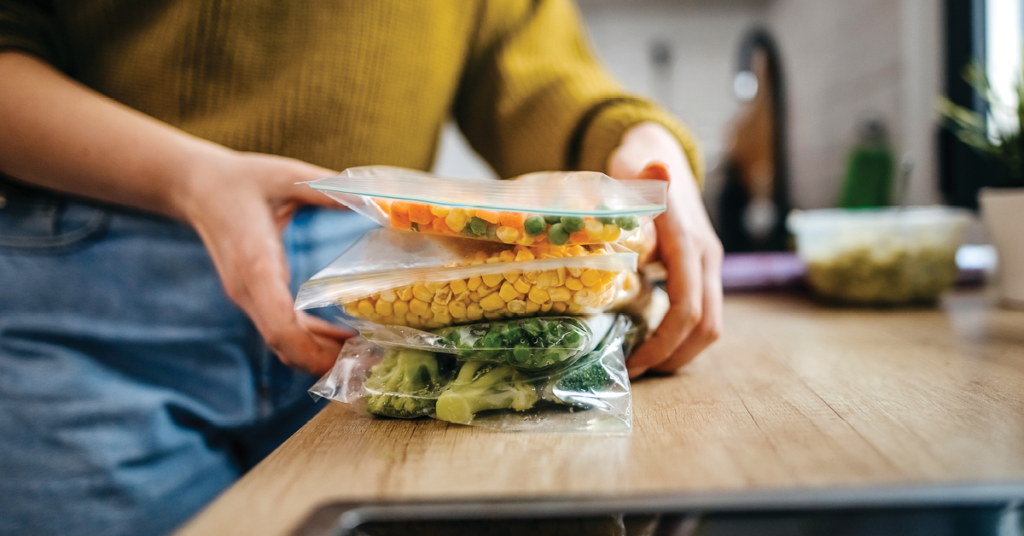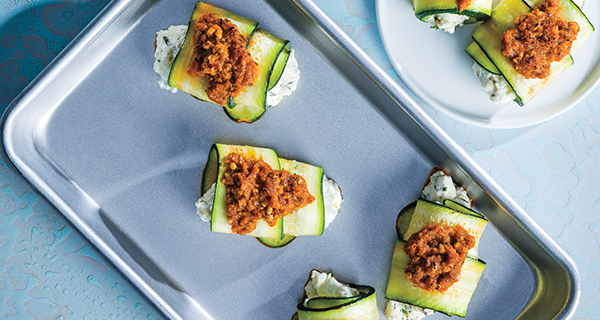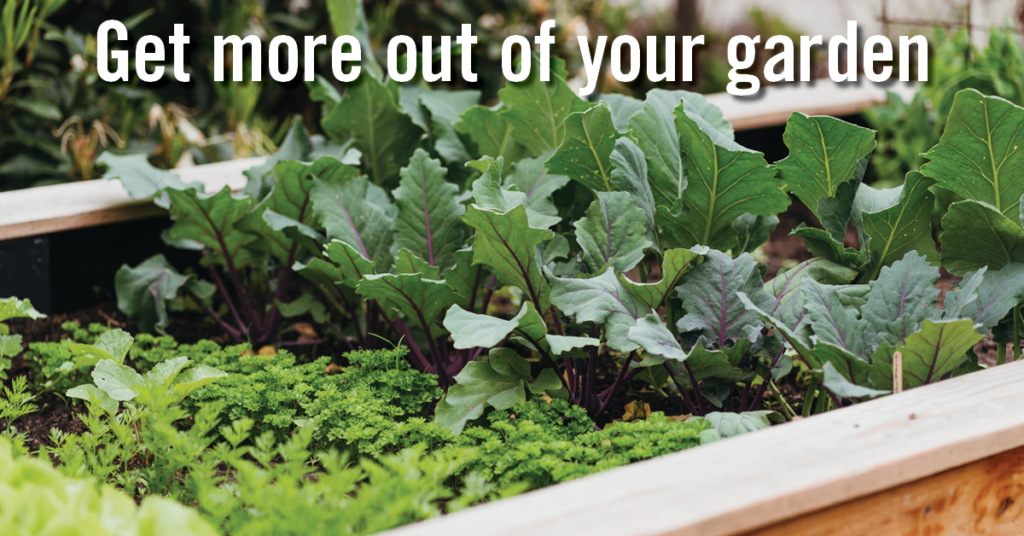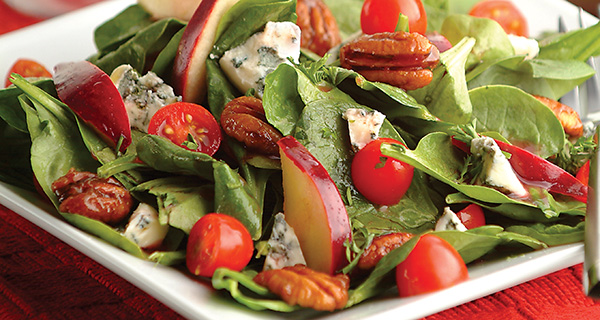
Leftover Strategies - Do Not Let Your Food Go to Waste!
Mia Teal
E-Commerce Marketing Department
Do you ever find yourself throwing out food because you made too much? Maybe you are unsure of how to properly store leftovers, so the easy option is to just toss the food. While it may seem convenient at the time, this can cost you hundreds of thousands of dollars per year. Even more alarming is that each year, approximately 108 billion pounds of food is wasted in the United States! What can you do to avoid this? We came up with how to save your leftovers and ways to make a meal out of a meal! With the kids going back to school, this will save you an abundance of time in your busy schedule.
First, let’s discuss your freezer. Before we can start freezing our leftovers, it is a wise idea to clean out what is already inside the freezer and check to see if older items are freezer burned. Foods that are freezer burned will appear grainy in texture, may lose its flavor, and have a grayish-brown hue. Once the freezer has been gutted, now it is time to store your leftovers. You may be surprised at how much you buy can be frozen!
Meats and Seafood:
Meats can be stored raw or frozen. Keep in mind, it could take up to 24 hours to defrost meat, so be sure to plan ahead. Seafood on the other hand can also be frozen. However, if you plan on freezing your seafood, it may be a smart idea to buy the fish frozen because it will last up to six months in the freezer. Seafood that is purchased already thawed will lose its quality after being refrozen. Both meats and seafood should be stored in an airtight freezer bag.
Bread and Baked Goods:
Breads and baked goods can be frozen, and this is especially important around the holidays when you will most likely have a ton of leftovers. Cookies and cakes are best frozen without any icing, as it can get sticky. However, just because there is icing on your baked goods does not mean that they must be thrown out. Additionally, if the kids are home on a holiday break and not as much bread for sandwiches is being consumed, it would be ideal to freeze that bread for the following week.
Dairy and Eggs:
Dairy items including butter and cheese are best frozen between six and nine months. These items should be stored in an airtight freezer bag or container. Higher fat cheese like cheddar will freeze better than soft cheese with less fat, like goat cheese. Whether you are cooking with butter or using cheese on your child’s school lunch, freezing dairy is very cost effective.
When freezing eggs, it is best to first crack the eggs in a bowl and scramble them. From here, add ⅛ teaspoon of salt OR sugar per egg. This will ensure that the yolk does not thicken while in the freezer. Pour the liquid eggs into a muffin tin or ice cube tray and freeze for 4-6 hours. Once frozen, they can be transferred to a container or freezer bag. The eggs will last up to one year frozen. If you want to save yourself time in the morning and make a meal out of the eggs, try adding in some veggies of your choice to make mini omelets before freezing!
Beans:
Beans can be frozen once drained from the can and rinsed. Beans should be placed in a Ziploc bag or container and then filled with water. Once completed, beans are ready to go in the freezer! What a great way to save time and money in the future if you are making a soup, chili, dip, or salad!
Fruits and Vegetables:
Almost all fruits and vegetables can be frozen. Fruits can become soggy once thawed, so it would be best to make a smoothie out of your leftover frozen fruit. Vegetables can be stored in an airtight container or freezer bag. Be wary of potatoes and lettuce as they do not freeze well.
While freezing food is a fantastic way to save, leftovers can also be used for your lunch or dinner the following day. Another option is making a meal like soup out of your leftovers and then freeze the soup! Check out a few recipes below that are quick and easy to make with your leftovers.
Slow Cooker Split Pea Ham Soup: Whether you made ham for your family’s dinner or have a ton left over from a holiday gathering, try making this Split Pea Ham Soup with veggies of your choice.
Spinach, Black Bean, & Corn Salad With Chipotle-Cocoa Vinaigrette: Add in some leftover meat of your choice if you choose, and there you have a very quick and easy lunch!

White Chicken Chili: This easy meal is the perfect fall lunch or dinner made with your leftovers!
Zucchini Lasagna Roll Ups: Have some leftover zucchini from the garden? Try these delicious roll ups!

Happy Saving!

Vegetable Storage Hacks!
Mia Teal
E-Commerce Marketing Intern
If you are someone that enjoys growing a garden in the summer and is dedicated to taking care of it, you may be experiencing an overflowing volume of vegetables. While having a surplus is a good thing, you might be running out of people to share your vegetables with! We have some tips and tricks on how to store your vegetables to extend their lifespan, as well as delicious recipes that can be made. After all, summer is winding down and we would hate to have you lose all your hard work.
When storing your produce, you first need to consider what types of vegetables you have and whether it should be stored in a room-temperature area or in a refrigerator. For example, potatoes, sweet potatoes, squash, garlic, tomatoes, and onions should be stored at room temperature, like a counter or kitchen table. Additionally, these types of produce should not be covered by a bag to allow them to breathe.
On the contrary, vegetables that should be refrigerated and stored in a sealed container or Ziploc bag include leafy greens, broccoli, cauliflower, radishes and carrots. By refrigerating produce in a sealed Ziploc bag, the cool moisture is held in. Additionally, ensure that the green tops of the radishes and carrots are removed prior to storage.
When storing your produce, be wary of what items you store next to each other. Apples should not be refrigerated directly next to leafy greens, broccoli, or cabbage due to ethylene gas that apples produce. This type of gas begins the ripening process and as apples begin to ripen, more ethylene gas is produced. Leafy greens are sensitive to ethylene gas, and by placing these next to produce like apples, you may lose your lettuce sooner than expected!
It is important to note that regardless of how well you store your produce, they will only last approximately one to three weeks depending on what type of vegetable it is. That is why you should always use your instinct to judge whether or not your vegetables should be consumed or thrown out.
Another great option is to try a new recipe using your fresh produce. Check out the recipes we have created below!
Spinach & Apple Salad with Raspberry Vinaigrette : This combination of fresh apples, tomatoes, and spinach mixed with pecans and Gorgonzola cheese is the perfect side salad at dinner!
Instant Pot® Tortellini & Vegetable Soup: While this recipe calls for frozen vegetables, replace it with vegetables of your choice from the garden!

Air Fryer Loaded-Taco Baked Potatoes with Guacamole: This baked potato is filling, healthy, and delicious for even the pickiest of eaters! Be sure to stop by your local Price Chopper or Market 32 for PICS cheese and sour cream.
Open-Faced Butternut Squash and Kale Omelet: This hearty and healthy breakfast is delicious and easy to make! All you need are PICS eggs and bacon, your garden vegetables, and spices of your choice.

Happy Gardening!


